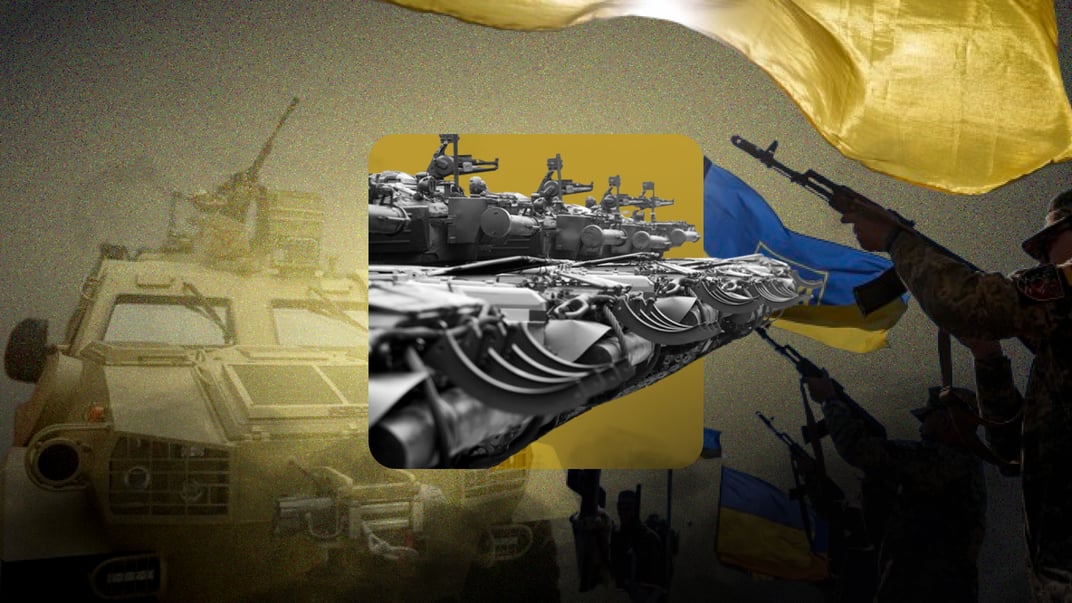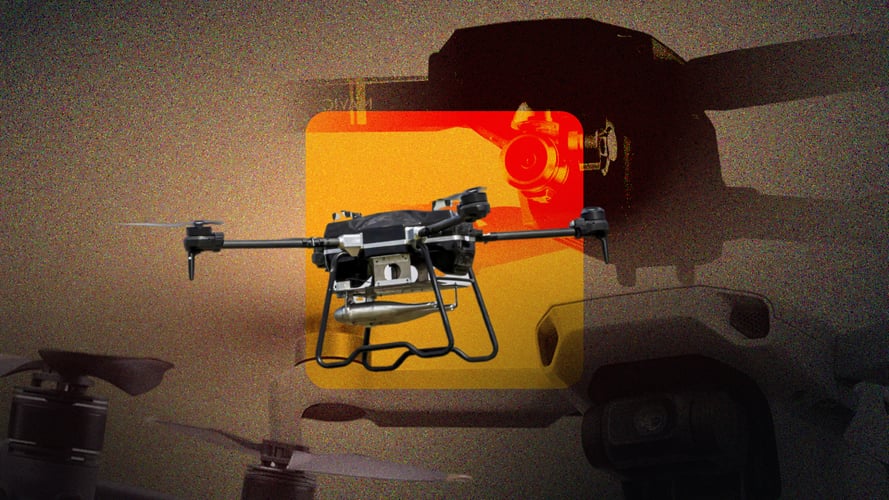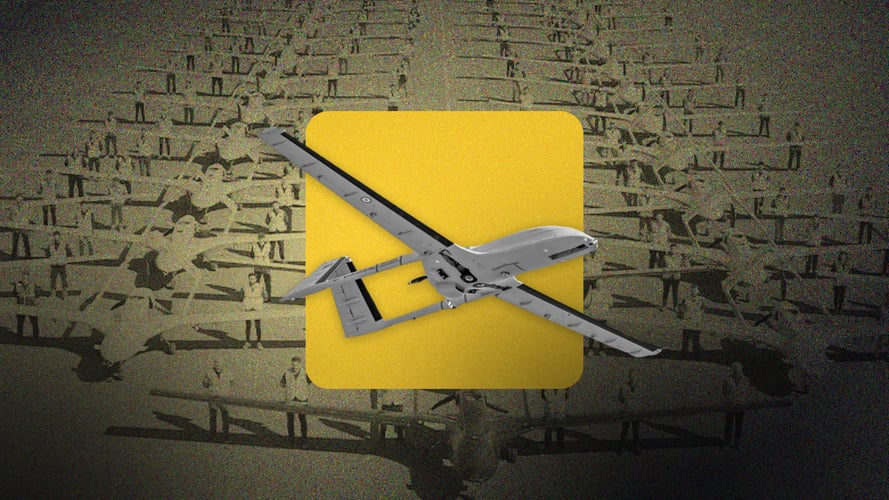"We can do more." What drives Ukraine's defense industry and what obstacles hinder its growth?

In the context of a 5.3% growth in the Ukrainian economy in 2023, the defense industry contributed 1.5%, according to calculations by Minstrategprom. This share could be significantly higher — there is potential for growth in the industry, provided there is an influx of new investment capital and solutions to regulatory issues.
From the defense budget of 2.2 trillion hryvnias in 2024, only 246 billion hryvnias are allocated for the production and procurement of Ukrainian weapons, which is just over 10%. The remaining expenses cover salaries, food, and medical care for military personnel.
Since the state budget for the upcoming year includes the same level of defense expenditures, it is likely that the Ukrainian defense sector will have approximately 250 billion hryvnias — although its volume was half that just in 2023.
“Each type of Ukrainian weapon has its own advantages and disadvantages, but it is extremely important that this weapon simply exists. And our military-industrial complex has coped very well with this task,” notes military analyst Ivan Kirichevsky.
So what strengthens the Ukrainian defense industry, and what hinders its development — was explored by hromadske.
What Makes the Ukrainian Defense Sector Strong
Approximately two-thirds of the Ukrainian defense market is occupied by the state company “Ukrainian Defense Industry” (“Ukroboronprom”), while one-third consists of private companies.
About 500 companies operate in the market, employing around 300,000 people. To put it into perspective, there is roughly one defense industry worker for every three military personnel. One of the largest employers in the country, the state company “Ukrzaliznytsia”, has 190,000 employees.
The Ukrainian arms industry has one significant advantage over the arms industries of many other countries — the weapons produced in our country can be tested in real war conditions and actual combat operations.
Military personnel using Ukrainian weapons share their experiences with manufacturers, leading to progress in this area.
“Within six months, the enemy adapts to our weapons, so the technical solution becomes obsolete,” explains Taras Shandura (Ajax), deputy commander of the 92nd OMBR. “If the manufacturer does not communicate with the combat unit, they do not understand the situation. After such communication, the manufacturer must quickly modify their product.”
This adds advantages to Ukrainian weapons, as communicating with foreign manufacturers is more challenging. However, this is not the only advantage.
“The Ukrainian sector is particularly strong in robotic systems and any army automation,” says Yekaterina Mikhalko from “Technological Forces”. “We have a human-centered approach, aiming for robots to fight instead of people wherever possible. Therefore, we should definitely focus on drones and robotic systems.”

The Ministry of Defense, along with the Ministry of Digital Transformation, which is also involved in the procurement of drones, has already contracted 1.8 million drones worth nearly 147 billion hryvnias for 2024-2025. This includes deep strike drones (Deepstrike kamikazes), FPV kamikazes, reconnaissance drones like the DJI Mavic, reconnaissance aircraft, winged drones, and attack helicopters.
Ukrainian manufacturers are capable of producing at least 20 types of reconnaissance drones, as well as most other types of unmanned aerial vehicles.
The company “Aтлон Авиа” has been in the drone production market for over a decade and has participated in international tenders. Its flagship product is the A1-CM “Furia” drone, which has the capability of conducting artillery reconnaissance. This is one of two unmanned systems of this type adopted by the Armed Forces of Ukraine.
“This is a standard artillery reconnaissance tool, so there is demand for our products,” explains the company's founder Artem Vyunik. “Furia” conducts artillery reconnaissance, accompanies and supports fire, enhancing its effectiveness.”
“We are improving our existing products and developing new ones,” he adds. “We will continue to meet the army's needs for unmanned systems.”
Alexey Babenco, head of Vyriy Drone, shared with hromadske about the high demand for drones.
“Drones are in demand — they are purchased directly for the state, for military units, and for volunteers,” says Babenco. “We are chosen because our drones have many innovations: guidance systems, special communication, and a low price, as over 70% of components are of Ukrainian production.”
The Ukrainian company “Infoshield” also has a wide range of drones, electronic warfare systems, and secure communication technologies, but not all of these enjoy significant demand. The tactical radio intelligence complex “Plastun” attracts the most interest among all of Infoshield's products. The company began supplying these systems to the Armed Forces back in 2018.
““Plastun” is a portable direction-finding radio receiver that allows brigade-level situational awareness about the enemy’s combat order,” explains Yaroslav Kalinin, director of “Infoshield”. “Before these systems appeared, such information was provided by the higher command, and there were issues with completeness, accuracy, and timeliness.”
“Now we have a better understanding of how the battlefield situation looks from the perspective of the electromagnetic spectrum, where positions are located, and how they move,” Kalinin adds. “But much depends, of course, on the skill of the intelligence chief and the brigade and company under their command.”
Progress in the Ukrainian drone production segment is quite rapid, particularly due to high competition among companies. Recently, 17 teams of manufacturers participated in joint “reviews” conducted by Minstrategprom, the Ministry of Defense, and the Ministry of Digital Transformation.
The government ministries wanted to see how capable Ukrainian manufacturers are of producing drones that would conduct combat operations in swarms, meaning they would unite into groups and act collectively — jointly performing combat tasks. Seven out of 17 teams presented such technology in their products.
However, the war is not only fought with drones.
“Private manufacturers can, for example, engage in drones, take on the segment of producing various types of ammunition, but what about heavy weapons, artillery, armored vehicles, and aviation?” shares military analyst Ivan Kirichevsky.
He cites the BTR-4 produced by the Malyshev Factory as a successful example of Ukrainian weaponry. This armored personnel carrier, also known as “Bucephalus”, transports soldiers very well across combat zones.
“A good piece, our military has publicly praised it,” says Kirichevsky.
Specializing in armored vehicles, unlike dozens of other Ukrainian manufacturers, is the company “Ukrainian Armored Vehicles”, which has been operating in the arms market since 2015.
“We supply armored vehicles to almost all law enforcement agencies: the Ministry of Defense, National Police, National Guard, and SBU. Over these years of supplies, there has been constant cooperation with the military who operate our equipment,” the company representatives say.
During the full-scale war, “Ukrainian Armored Vehicles” also developed an improved version of the specialized armored vehicle “Novator”. In 2023, the SBA “Novator 2” passed testing, is already in serial production, and is supplied to the Defense Forces.
Another new product from the company is the armored vehicle “Varta 2” with the combat module “Sich”, which was presented at a specialized exhibition in Poland.
In addition, the company produces and supplies a full range of mortars — 60 mm, 82 mm, and 120 mm calibers. The 120 mm caliber mortar is the most in demand among military personnel.
Moreover, in 2023, the company, in cooperation with several NATO countries, launched the production of ammunition.
“An additional advantage in modern warfare is rapid service support, which our company pays great attention to. We have formed mobile service brigades that quickly and as close as possible to the front line conduct ongoing repairs,” the press service of “Ukrainian Armored Vehicles” reports.

Foreign Guests in the Market
The development of the Ukrainian defense industry is also influenced by competition from foreign manufacturers, who are actively establishing their production in Ukraine.
For instance, the German defense concern Rheinmetall plans to build four factories in Ukraine for weapon production.